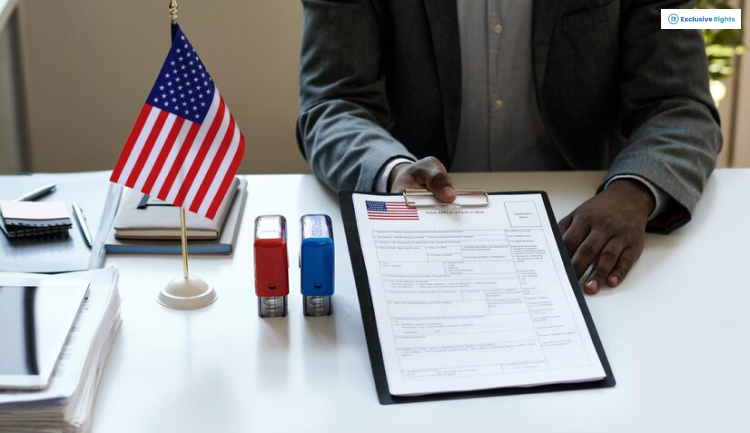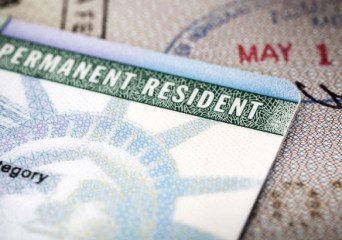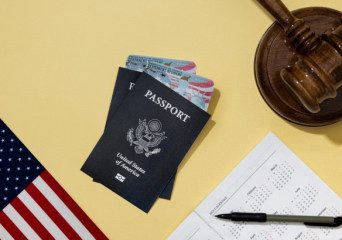
Table Of Contents
- What Is a Request for Evidence (RFE)?
- What Law Governs Request for Evidence in the US?
- What is the Evidence you Submit before Getting a Request for Evidence (RFE)?
- Does a Request for Evidence (RFE) Occur due to a Lack of Evidence?
- What is the Response Deadline for a Request for Evidence (RFE)?
- Does Receiving a Request for Evidence Mean My Application Was Rejected?
- How can I avoid a Request for Evidence?
- Provide the required initial evidence
- Include translated documents
- Evidence of Visa Sponsor’s Income
- Proof of legal entry
- Do I Need a Lawyer to Respond to a Request for Evidence?
- How Many Times Can I Respond to Request for Evidence?
- Final Words
A Comprehensive Guide to Request for Evidence (RFE)
We recognize that navigating the U.S. Immigration process may be overwhelming, but we want to guarantee you that we are here to help. At times, USCIS might also require additional data to make a properly informed selection in your case. This is wherein a Request for Evidence (RFE) comes into play, and we need to provide you with the important knowledge to avoid and respond to one. This article will guide you through the procedure of information on what an RFE is and the way it can be avoided, all at the same time preserving your immigration journey nicely and constructively.
What Is a Request for Evidence (RFE)?

When you record an application with the U.S. Citizenship and Immigration Services (USCIS), you want to provide proof to help your eligibility. However, if the USCIS determines that the evidence you have provided is not enough to guide your utility. It may send you a Request for Evidence (RFE). The RFE is an observer who informs you that the USCIS calls for greater facts or documentation to keep your utility.
For instance, if you are utilizing an inexperienced card, you should offer enough proof to show that you are eligible. If the proof you’ve submitted is incomplete or inadequate, the USCIS will most likely difficulty an RFE. When the USCIS troubles an RFE, it will ship you a Form I-797E (be aware of motion) to the mailing address you provided for your utility. Therefore, it’s vital to make sure that your mailing cope with is correct to avoid lacking any vital updates. In case you have got a changed mailing deal since you are submitting, you want to update your new deal with USCIS right away.
An RFE typically consists of four sizeable factors. First, it cites the applicable regulation that applies to your utility. Second, it lists all the evidence which you submitted collectively with your application. Third, it lists the precise proof which you need to provide to complete your utility.
Finally, the RFE includes a cut-off date by which you ought to reply with y with more facts or documentation asked. It is essential to provide the facts asked for or documentation within a detailed time body to avoid delays. Or, perhaps denial of your utility. Therefore, it is critical to cautiously evaluate the RFE and provide all the important proof to guide your utility.
What Law Governs Request for Evidence in the US?

When you receive a Request for Evidence (RFE) from U.S. Immigration authorities, the first component you may be aware is a connection with a particular phase of the Immigration and Nationality Act (INA) that relates to the necessities to your immigration application.
Although this section may additionally seem intimidating, in case you’re no longer acquainted with the felony jargon, it’s usually now not the maximum essential a part of the RFE. What absolutely subjects are that you reply right away and punctiliously to the request for any extra proof that the immigration authorities need to process your application. Failing to provide the requested evidence can put off your application or maybe bring about a denial.
Therefore, it’s crucial to apprehend precisely what form of evidence is being asked and to gather and post it as quickly as possible. While you can pick out to task the RFE with the assistance of a skilled immigration lawyer, in maximum instances, it is satisfactory to focus on providing all the required evidence to meet the immigration government and flow your application ahead.
What is the Evidence you Submit before Getting a Request for Evidence (RFE)?

It is designed to provide you with an in-depth review of the evidence that you have already submitted to support your utility. It is vital that you cautiously assess the list of proof that USCIS has received from you to confirm that it consists of everything you dispatched with your original application.
In case USCIS did not encompass something, you submitted on this list, you must recollect resubmitting it as a part of your Request for Evidence (RFE) response packet. This will help ensure that your application is entire and that your case is reviewed as speedily and efficiently as viable.
It is well worth noting that the completeness and accuracy of the evidence you submit can have a good-sized effect on the fulfillment of your application. Therefore, you should make the effort to cautiously assess all the documentation you’ve submitted to make certain that it’s miles entire, accurate, and meets all the requirements outlined by using USCIS.
By following these hints, you can assist in making certain that your application is processed as speedy and correctly as viable and which you have the quality viable risk of fulfillment.
Does a Request for Evidence (RFE) Occur due to a Lack of Evidence?

When you receive a Request for Evidence (RFE) notice from the United States Citizenship and Immigration Services (USCIS), it will typically list the documents that you have already submitted and then go on to list the missing evidence that is required for the agency to make a decision on your case. This lack of evidence is preventing the agency from making a decision on your case in accordance with the requirements of the immigration law that was quoted earlier in the notice.
It is important to note that this section of the RFE is usually quite lengthy, as USCIS will typically include detailed information about eligibility requirements that have not been met and alternate documents that can be submitted if you don’t have the requested originals.
It is crucial that you review this section very carefully. And take note of all the information you will need to include in your RFE response to support your case.
In summary, it is essential to provide all the requested evidence in your RFE response, as this is necessary for USCIS to make a decision on your case. Therefore, it is important to carefully review the RFE notice and provide all the requested documentation and evidence to the best of your ability.
What is the Response Deadline for a Request for Evidence (RFE)?

After submitting an application for a US visa or green card. You may receive a Request for Evidence (RFE) from USCIS, asking for additional information or documentation. Upon receiving the RFE, USCIS will provide you with a deadline for submitting your RFE response. As well as the mailing address to send it to. It is important to note that your response must arrive at the USCIS office by the deadline provided, and it is not acceptable to simply have your response postmarked by the deadline.
The response deadline will give you a specific timeframe for putting together your RFE response and mailing it. It is crucial to adhere to this deadline, as USCIS will inform you of the consequences of not submitting your RFE response by the deadline. The most significant consequence is that USCIS will review your application without the missing information and will likely deny your application.
Does Receiving a Request for Evidence Mean My Application Was Rejected?

When you apply for a US immigration benefit, you may receive a Request for Evidence (RFE) from the United States Citizenship and Immigration Services (USCIS). This does not necessarily mean that your application has been rejected or will be rejected. It simply means that USCIS needs more information from you to make a decision on your application.
It is important to note that you are required to respond to the RFE within the specified time frame mentioned in the notice. Failure to do so may result in USCIS concluding that you have abandoned your application. Along with, its has also denied it or deciding your case without the additional information requested. Therefore, it is crucial to keep USCIS informed of your current address so that you can receive the notice and submit your response within the specified time frame.
How can I avoid a Request for Evidence?

Submitting an organized and complete application can help you avoid RFEs and save time. Follow USCIS’ instructions and include all requested documents to increase your chances of avoiding a request for evidence. Here are some tips to avoid a request for evidence:
Provide the required initial evidence
When filing an immigration form with USCIS, make sure to follow the provided instructions and include all required evidence. Failure to do so may result in receiving a Request for Evidence (RFE). USCIS requires various types of documents as evidence, and submitting difficult-to-read documents may also result in an RFE.
Include translated documents
If you have documents that are not in English, you must provide a certified English translation to USCIS. This is important because if you don’t, USCIS may send you a Request for Evidence (RFE). Any document you provide to USCIS must be translated into English by someone else, not you or your sponsor.
This will help the reviewing officer process your application. It is recommended that you get your foreign language documents translated officially, ideally by a legal office that specializes in translations. This will ensure that your documents retain their legal meaning.
Evidence of Visa Sponsor’s Income
If you are applying for a family-based immigrant visa and have a petitioner sponsoring on your behalf, it is important to know that USCIS requires applicants to provide evidence of their sponsor’s household income. Specifically, the sponsor must have the federal poverty level requires an income of no less than 125%.
If your sponsor’s income does not meet this requirement. Or if you do not provide enough information to prove their financial standing, USCIS may send you a Request for Evidence (RFE) asking you to provide additional documentation. In some cases, you may need to find an additional sponsor who meets the income requirement. It is important to pay close attention to these requirements to ensure your application is processed smoothly and efficiently.
Proof of legal entry
If you’re applying for an immigration application from within the U.S. You’ll need to show proof that you entered the country legally. You can do this by providing a page from your passport with the Customs and Border Patrol (CBP) stamp or with your I-94 travel record. If you don’t provide enough evidence of your legal entry, you may receive a request for evidence (RFE) asking for more information about your arrival to the U.S.
Do I Need a Lawyer to Respond to a Request for Evidence?
When you receive a Request for Evidence (RFE) from the United States Citizenship and Immigration Services (USCIS). It may question your eligibility for the immigration benefit you are applying for based on some aspect of U.S. immigration law. It becomes crucial to prove in your RFE response that you are eligible for the application you are submitting.
If you find yourself stuck in such a situation, it is recommended that you seek guidance from an experienced immigration attorney who can assist you in determining how to respond to the RFE and which documents to submit as evidence. Remember, a well-prepared response can make all the difference in your immigration journey.
How Many Times Can I Respond to Request for Evidence?

When you receive a Request for Evidence (RFE) from USCIS, it’s important to remember that you only have one opportunity to respond. It’s crucial that you include all the necessary evidence that you want USCIS to consider in your RFE response. Please keep in mind that you cannot send evidence to USCIS in separate mailings; all evidence must be submitted in one packet.
Responding to an RFE can be a complex process, and it’s normal to have questions. It’s a good idea to seek guidance from an experienced immigration lawyer. This is to ensure that you’re submitting a thorough response that meets all the requirements.
Final Words
Now that you have a better understanding of the ways you can handle a request for evidence. It is highly recommended to consider hiring an experienced immigration attorney. With the help of an attorney, you will have a better chance of clearing any unnecessary hurdles in your immigration process to the US.
Read Also:









